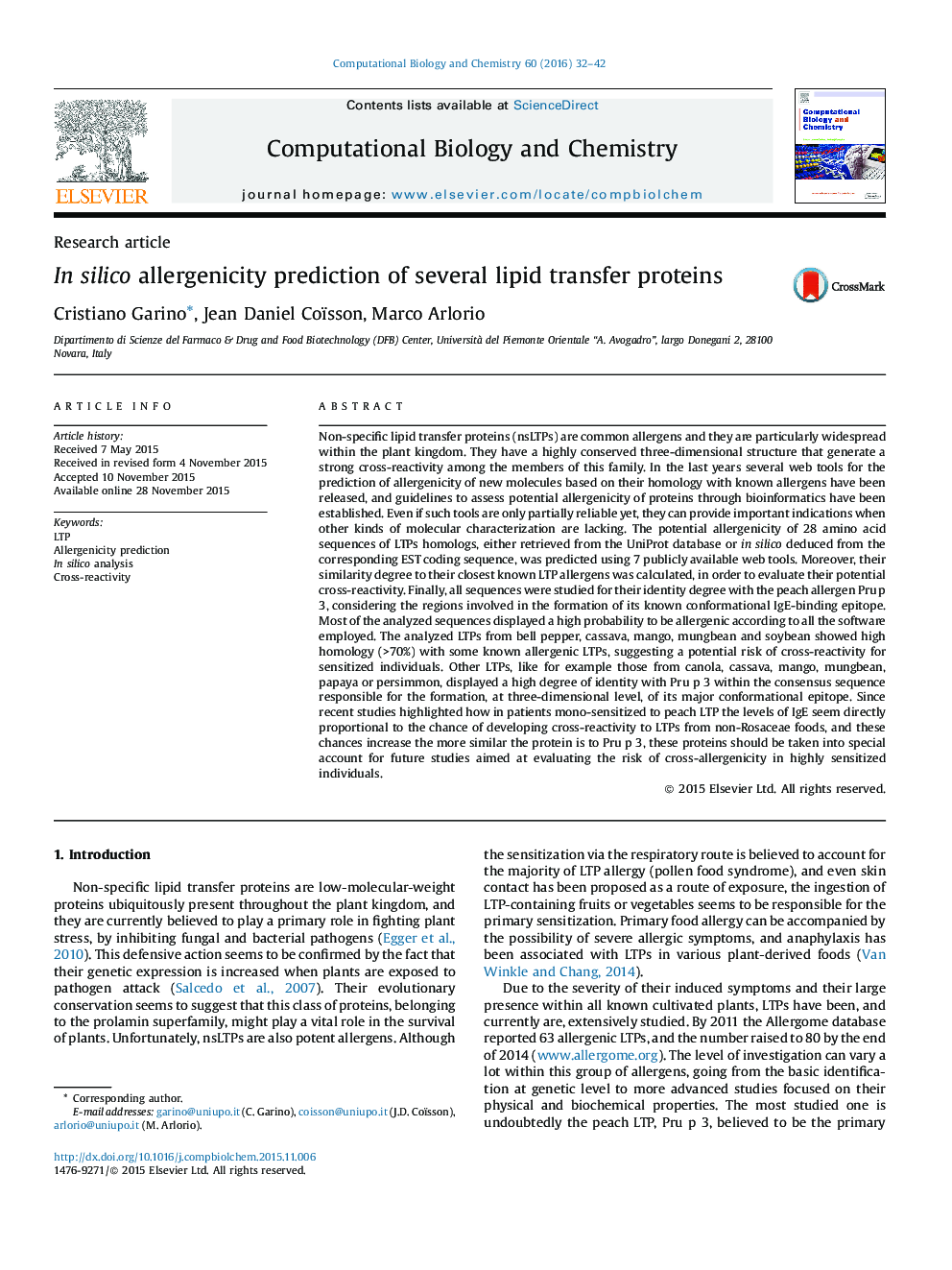| کد مقاله | کد نشریه | سال انتشار | مقاله انگلیسی | نسخه تمام متن |
|---|---|---|---|---|
| 14960 | 1363 | 2016 | 11 صفحه PDF | دانلود رایگان |
• Eleven EST sequences coding for previously unknown nsLTPs were identified.
• Twenty-eight protein sequences were in silico analyzed for allergenicity prediction.
• Twenty-four sequences showed a potential allergenicity according to 7 web tools.
• Some LTPs displayed high similarity to Pru p 3 within its IgE-binding epitope.
Non-specific lipid transfer proteins (nsLTPs) are common allergens and they are particularly widespread within the plant kingdom. They have a highly conserved three-dimensional structure that generate a strong cross-reactivity among the members of this family. In the last years several web tools for the prediction of allergenicity of new molecules based on their homology with known allergens have been released, and guidelines to assess potential allergenicity of proteins through bioinformatics have been established. Even if such tools are only partially reliable yet, they can provide important indications when other kinds of molecular characterization are lacking. The potential allergenicity of 28 amino acid sequences of LTPs homologs, either retrieved from the UniProt database or in silico deduced from the corresponding EST coding sequence, was predicted using 7 publicly available web tools. Moreover, their similarity degree to their closest known LTP allergens was calculated, in order to evaluate their potential cross-reactivity. Finally, all sequences were studied for their identity degree with the peach allergen Pru p 3, considering the regions involved in the formation of its known conformational IgE-binding epitope. Most of the analyzed sequences displayed a high probability to be allergenic according to all the software employed. The analyzed LTPs from bell pepper, cassava, mango, mungbean and soybean showed high homology (>70%) with some known allergenic LTPs, suggesting a potential risk of cross-reactivity for sensitized individuals. Other LTPs, like for example those from canola, cassava, mango, mungbean, papaya or persimmon, displayed a high degree of identity with Pru p 3 within the consensus sequence responsible for the formation, at three-dimensional level, of its major conformational epitope. Since recent studies highlighted how in patients mono-sensitized to peach LTP the levels of IgE seem directly proportional to the chance of developing cross-reactivity to LTPs from non-Rosaceae foods, and these chances increase the more similar the protein is to Pru p 3, these proteins should be taken into special account for future studies aimed at evaluating the risk of cross-allergenicity in highly sensitized individuals.
Figure optionsDownload as PowerPoint slide
Journal: Computational Biology and Chemistry - Volume 60, February 2016, Pages 32–42
